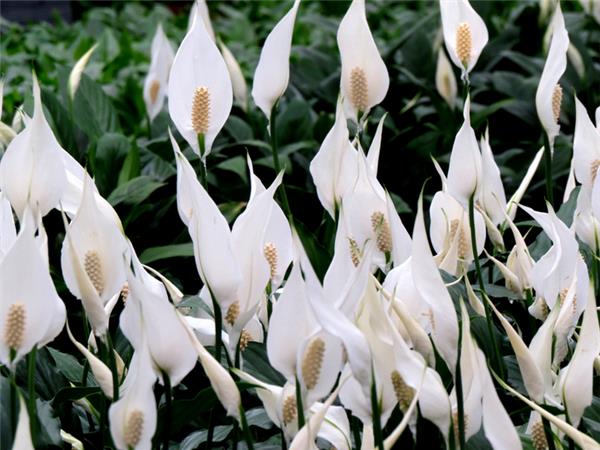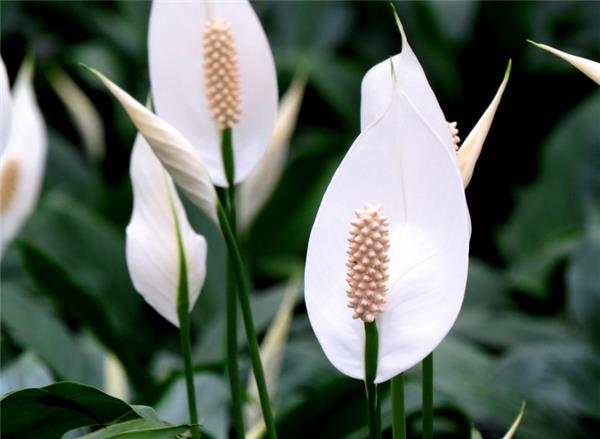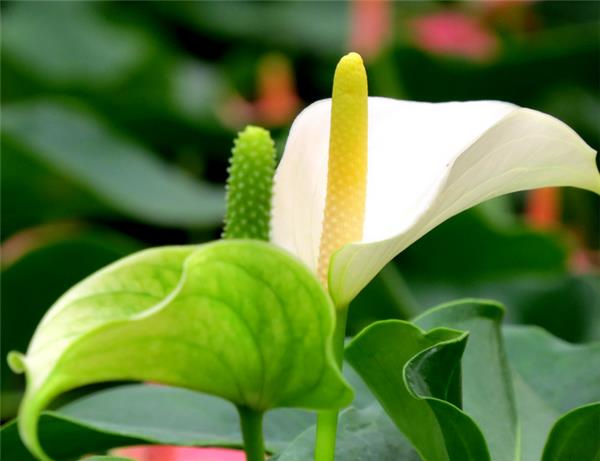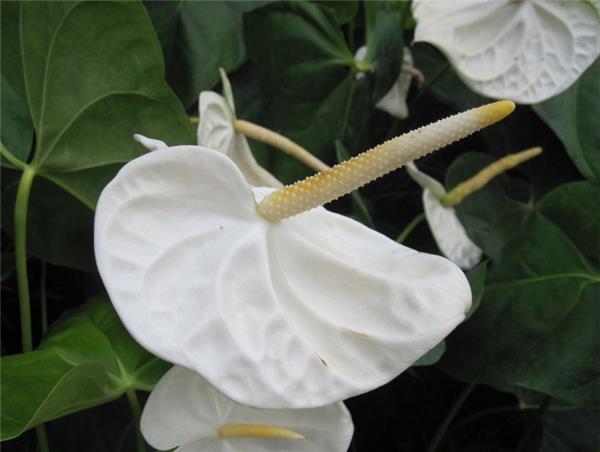Introduction to the culture methods of white palm the matters needing attention in the culture of white palm
White palm, alias bract taro, plain sailing, peace taro, lily intention, white crane taro, alisma orientalis, Araceae perennial evergreen herbaceous foliage plants, white palm is one of the common green plants placed in offices and homes. Today we would like to introduce the breeding methods and matters needing attention of white palm.

Culture method of White Palm
1. Soil: White palm potted plants require loose soil, good drainage and ventilation, and can not use heavy soil. Generally, rotten leaf soil, peat soil and a small amount of perlite can be used as substrate, and a small amount of organic fertilizer can be added as base fertilizer when planting.
2. Time: in combination with basin change from March to May in spring or after autumn.
3. Ramets: two-year-old plants with strong growth were selected for ramet propagation, the whole plant was pulled out of the basin, and the rhizome was cut from the base of the plant clump, with at least 3-4 leaves in each clump.

4. Upper pot: put the plant with good ramet back into the pot and restore it in a semi-shady place after planting. When it takes root, it should be noted here that it should be cut with a stem, and then apply charcoal ash to the wound to prevent decay. When the root system returns to normal, it can enter the normal management.
5. Illumination: light is very important for plant growth. White palm needs better light in winter and early spring, but it should be shaded gradually when the light is getting stronger. If you enjoy it in the shade, you can't directly expose it to the sun. This is very bad for the growth of white palm.
6. Temperature: White palm is a kind of species that likes high temperature and should be cultivated in high temperature greenhouse. The lowest temperature in winter should be 14-16 ℃ at night and about 25 ℃ in daytime.

7. Watering: White palm should always keep the basin soil moist during the growth period, but not too much watering, too much basin soil will be moist for a long time, easy to cause rotten roots and plants withered and yellow.
8. Fertilization: do not apply thick fertilizer or raw fertilizer, and water once after applying solid fertilizer, it is best to use thin fertilizer instead of water, so that there is generally no fertilizer damage, and white palm will grow very luxuriantly.
9. Pests: plants are the most popular pest during the growth period, so special mites should be sprayed regularly to control them, such as dicofol, Nisolan, pyridaben and so on.
10. Change the basin: change the basin every 1-2 years, trim the root system, remove part of the old root and over-long root system, remove the old soil and replace it with new culture soil, so as to facilitate the flowering of white palm.

Matters needing attention in the culture of white palm
1. Because the white palm grows fast and needs a large amount of fertilizer, liquid fertilizer must be applied every 1 or 2 weeks in the growing season.
2. Provide sufficient water at the same time, keep the basin soil moist, and spray water to the leaf surface and the ground during the high temperature period to improve the air humidity. If the surrounding environment is too dry, the new leaves become small and yellow, and when they are serious, they wither and fall off. The amount of water should be reduced at the end of autumn and winter, and the basin soil should be kept slightly moist.
3. It requires semi-overcast or scattered light conditions, and 60%-70% shade in the growing season. If the light is too strong, the leaves are easy to burn and scorch, and the leaves are dim and lose luster; if the light is too dark for a long time, the plant growth is not robust and it is not easy to bloom.
4. for the species that like high temperature, long-term low temperature and humidity are easy to cause root rot and aboveground parts withered and yellow, so we should pay attention to cold protection and heat preservation in winter and keep the basin soil moist at the same time.
Related
- Wuhan Hospital Iron Tree Blooming Result Was Instantly Frightened by the Gardener Master
- Which variety of camellia is the most fragrant and best? Which one do you like best?
- What is the small blue coat, the breeding methods and matters needing attention of the succulent plant
- Dormancy time and maintenance management of succulent plants during dormancy
- Minas succulent how to raise, Minas succulent plant pictures
- What are the varieties of winter succulent plants
- How to raise succulent plants in twelve rolls? let's take a look at some experience of breeding twelve rolls.
- Attention should be paid to water control for succulent plants during dormant period (winter and summer)
- Watering experience of twelve rolls of succulent plants
- Techniques for fertilizing succulent plants. An article will let you know how to fertilize succulent plants.



